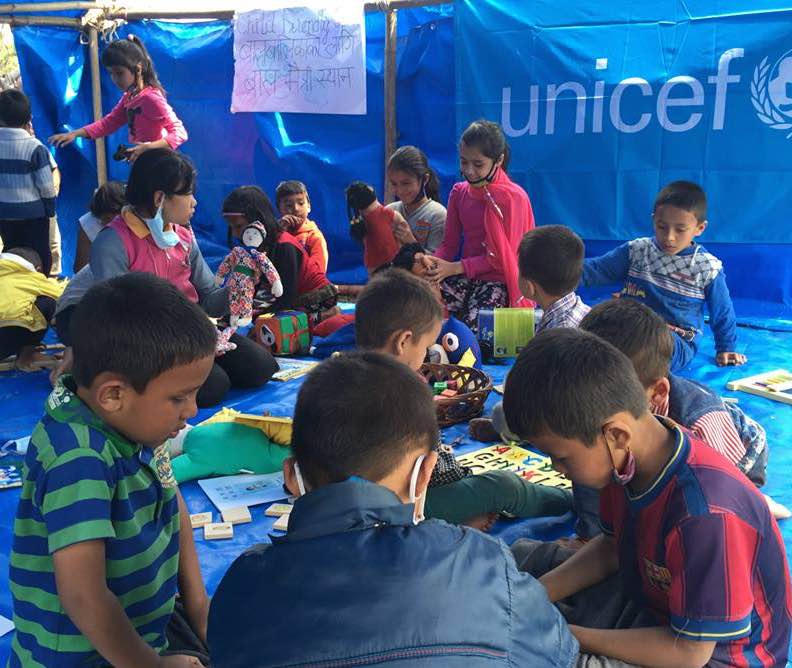As Nepalese struggle to recover from the devastation of last week’s 7.9-magnitude earthquake, art therapy is helping children cope with the traumatic experience.
Children are especially vulnerable during emergencies. Over the years, art therapy has been used in disaster relief as a highly feasible means of reaching out to traumatized children and victims of natural catastrophes and war. Children put on paper the unspeakable – their fears, their emotions, their mourning. The creative process allows them to reveal their suffering, thereby relieving themselves of their psycho-emotional burden.
Sneha Shrestha, founder of Nepal’s first Children’s Art Museum is collecting funds to provide art therapy to children affected by the earthquake.
“We know that our role is going to be so vital over the next several years helping children cope with the disaster,” Shrestha said.
Several organizations have been delivering tonnes of humanitarian supplies to Nepal as part of ongoing efforts to reach at least 1.7 million children living in areas hardest hit by the earthquake.
“The spaces we have set up in informal camps offer children a chance to have fun and continue learning when going to school is no longer an option – while providing them with psychosocial support,” Rupha Joshi, an emergencies communication officer for UNICEF, said.
Children need stimulation and play on a regular basis. Child friendly spaces are widely used in emergencies as a first response to children’s needs and an entry point for working with affected communities. According to the International Child Art Foundation research shows that earthquakes increase the rates of mental health problems in the communities they strike. Art therapy services were found to be instrumental in accessing young victims’ internal processes and helping children be children again.
To support the Children’s Art Museum’s Indiegogo campaign, here. Click here support UNICEF Nepal.




















